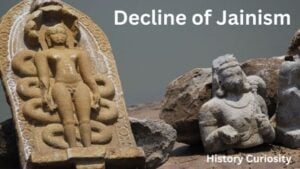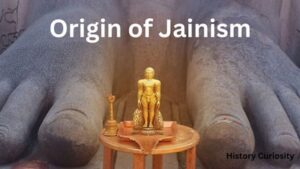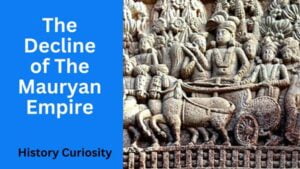The status of women in India has undergone significant changes over the centuries. In ancient times, women had relatively more rights and opportunities, with prominent female figures in politics, education, and spirituality. However, the emergence of patriarchal norms, as seen in religious texts and the caste system, led to the erosion of women’s status. The medieval period saw restrictions on women’s rights, including restrictions on education and property ownership.
Under British colonial rule, reforms began to address issues such as widow remarriage and women’s education. After independence in 1947, India adopted a democratic constitution that granted equal rights to women. Over time, women have made remarkable strides in various fields, but gender inequalities and violence against women persist, necessitating continuous efforts for gender equality.
In recent decades, women have become leaders in politics, business, and culture. Initiatives such as the reservation of seats for women in local government increased their political participation. While progress has been made, India still faces challenges related to gender-based violence, unequal pay, and women’s limited access to education and healthcare. Addressing these issues remains a vital part of the ongoing struggle for gender equality in India.
Position of Women in India
| Historical Events | Position of Women in India |
| Education | Rising, but the gender wage gap and workplace discrimination persist. |
| Workforce Participation | Rising, but the gender wage gap and workplace discrimination persist. |
| Political Representation | Progress was made, but still low representation at higher levels. |
| Legal Rights | Numerous laws protect women’s rights, but enforcement can be a challenge. |
| Health and Maternal Mortality | Cultural and Social Norms |
| Gender-Based Violence | High incidence, efforts to combat violence and harassment are ongoing. |
| Cultural and social Norms | There is a varied impact; traditional gender roles persist in many parts of India. |
| Empowerment Initiatives | Government and NGO programs focus on women’s empowerment and development. |
| Notable Achievements | Women excel in various fields, contributing to India’s progress. |
Introduction
Women in India today constitute almost half of the population, but hegemonic masculine beliefs are a constant reason for their suffering. Women are denied equal opportunity, equal pay, equal status, and equal status in most areas of our society. In modern times, there has been a rise in feminist ideas that have led to a huge upliftment of the status and position of women in our society. If we look back to ancient India, we see a completely different society that respected and worshiped women equally. How did things change, and why were women subjected to such inequality? Was the status of women the same or different in the Vedic period? What can we do to change this in the future? All these questions are addressed in this article. Instead of a global scenario, here we will look only at India and its society. We look at the past, present, and future of the status of women in India. In this patriarchal society, women do not have the same status as men, but how true is that in the case of India? We will analyze this phenomenon in this article. In the second part, we will look at the historical and modern laws that affect women in Indian society. What is the difference between them, and how have things changed? We have analyzed ancient Hindu scriptures, texts, and literary books to reach our conclusion. After a thorough comparison, we found the pros and cons of both. Finally, you will get a complete overview of the evolution of the position of women in India over thousands of years.
Status of Women in the Vedic Age
To understand how women and girls were treated and viewed in the Vedic civilization or period, we need to analyze the ancient Hindu scriptures, hymns, religious books, and various literary works that reflect social customs, which were then prevalent in India. We can get a picture of the status accorded to women by analyzing the status in terms of education, society, finance, rights, customs, etc. There are several parameters that can be considered to analyze the status of women in the Vedic period of India. To gain a deeper insight into the past, we can look into the Vedas, Gita, Mahabharata, Ramayana, Arthashastra, Dharmashastra, and several other ancient literary works.
In Vedic times, women had to face a world full of paradoxes. Women enjoyed a high status in the early Vedic age, which later deteriorated in the later Vedic age. They were allowed to organize a ‘Swayambhar’ and could choose their significant other in that Swayambhar. However, the women led a miserable married life because their husbands were allowed to have more than one wife. Men from the privileged societies of ancient Indian culture followed polygamy. Women were married after the age of 16. They also had considerable freedom in choosing their spouse.
Manu, the father of Indian political theory, describes the position of women in the Vedic age as a place of trust and submission. The classical political literature of Arthashastra confirms that extensive restrictions were placed on the development of women in society. In terms of education, all unmarried women had to study. Several saints of the Vedic period, like Maitrayi, Ghosa, Gargi, and Vak, were highly skilled and learned in composing complex Vedic stanzas for hymns. Several verses in the Vedas prove that women have the right to education. As a wife, women were given affection and respect, and as a mother, she was regarded as a figure of deep respect. They were held in greater esteem in India than in any other ancient country. It would not be wrong to say that women had much more freedom and higher status in the Vedic period than in later India.
Status of Women in the Post-Vedic Age
According to ancient Hindu scriptures and texts, women enjoyed considerable freedom and high status in Indian society. However, over the next thousand years, the position of women deteriorated significantly across all spectrums. In the post-Vedic age, the status of women began to degenerate due to several factors. Child marriage began in the Smriti age, and the practice of self-immolation called Sati began in the Middle Ages. Before the Mughal period began, a number of problems arose for Hindu women. We can clearly see that the conditions for women have worsened over time.
During the first Muslim invasion in the eighth century and the second invasion in the eleventh century, there was a gradual decline in the social, political, economic, and cultural lives of women, especially Hindu women. Mohammad Ghazni conquered India in the eleventh century, and the Mughals ruled India from this period until the eighteenth century. Several gender inequalities emerged in Indian society during this period. Practices like Pudah Pratha, Sati Pratha, child marriage, polygamy, female killing, etc. were the greatest social evils of the post-Vedic period. At the same time, social reformers and revolutionaries like Kabir, Meera, Ramdas, Nanak, Chaitanya, and many others stood for equal rights for women. Because of their support, women achieved religious freedom and, to some extent, social freedom. In terms of economic status, women were completely dependent on male family members. The status of women deteriorated from a divine being to an object of gratification as we approached the post-Vedic and Mughal periods of the Vedic period.
Status of Women in the British Period
In the mid-18th century, the British entered India as traders. For the first 100 years, the British East India Company ruled India and then came under the direct control of the British Queen for the next 100 years. During this period, practices like Sati, child marriage, and several other social evils were banned and removed from Indian society. They also encouraged widow remarriage and legalized it as well. At that time, there were high cases of femicide in states like Gujarat, Rajasthan, Sind, Punjab, Madhya Pradesh, etc. In 1779, the British declared femicide murder under the Bengal Ordinance XXL. Similarly, the age of consent was raised to 12 by the British government in 1891. Several forms of slavery, such as domestic and predial, were addressed.
However, the British government only passed laws and bills. The main heroes or figures behind all these social reforms were the great Indian revolutionaries like Raja Rammohan Roy, Arya Samaj, Ishwar Vidyasagar, B. R. Ambedkar, and several others. Several laws contributed to the upliftment of Hindu women in matters of marriage, inheritance, and adoption. Some of them are the Hindu Succession Act (1929) and the Hindu Women’s Right to Property Act (1937). Hindu Marriage Act, etc. During this period, women helped their male counterparts fight against the British and contributed greatly to the freedom movement. The gradual process of becoming a conglomerate of languages, ethnicities, cultures, and states into an independent nation contributed to raising the status of women in society. India as a nation suffered under the hands of the British and their oppressive economic and political policies. However, she ignited and united the entire nation to oppose inequality with one voice, whether it was women or men.
Status of Women Present
Post-independence India has a democratic government and a constitution that lists women as legal citizens with equal rights. If we analyze the current time using several parameters, we will understand the current status of women in India. The law protects women, their basic rights, and their existence in general.
Every year, new policies and laws are passed to protect women from crimes, discrimination, gender inequality, etc. So we can say that we are aware of the fact that women deserve equal rights. However, ground reality tells a different truth. In modern society, women are treated as sex objects and are constantly targeted for being the weaker sex. Every day, several cases of rape, molestation, dowry, extortion, and several other gender-based crimes are reported in India. It clearly shows that society in India has not yet accepted women as equals.
On the other hand, women have the right to education, the right to own property, the right to practice any religion, the right to marry without parental consent, and so on. Yet women lack acceptance from a male-dominated society. We cannot deny that we live in a patriarchal society, and men mistreat women on several occasions. Men are highly revered, and little girls have little respect in the social hierarchy. Social workers, social activists, and reformers are trying to bring gender equality to India through laws and policies. However, we need to empower women from the ground up. We need to work on the 3E’s: empower, educate, and enable. The need of the hour is to properly enact these 3Es and work intensively for the upliftment of women in our society.
Historical Law
In Vedic times or ancient India, laws primarily evolved from customs and religious parameters. India has a detailed and recorded legal history and body of laws, also known as smritis, dating from the Vedic ages. Even in the Indus Valley Civilization, India had a body of laws and a legal system that was the backbone of society and government. Hindu laws are based on the Vedas, Upanishads, and several other religious scriptures and textbooks. Secular law in India varies from region to region. However, the courts and legal system remained essential features of the various ruling dynasties. Hindu laws were based on Dharma and are mentioned in the Dharma Shastra, written by Manu. It consisted of the Varna system, which means caste system. According to the Hindu Varna system, society had 4 classes in the hierarchy. It consisted of Brahmins, Kshatriyas, Vaishyas, and Shudras. Dharmashatra consisted of life cycle rituals, daily rituals, specific duties, and proper conduct of all four classes or varnas. It also consisted of punishments, crimes, duties of a king, etc.
Women had equal rights in society and were treated the same as men. Therefore, no special laws are mentioned to provide reservations to women, nor are there laws that protect women from dowry or that prohibit female killing. All these laws did not exist in historical times, nor were they needed. However, in the coming centuries, things changed, and new laws were passed to address the current situation. When we moved to the British period, women faced several social atrocities like the practice of Sati, the practice of Pardah, child marriage, and the list goes on. To counter and remove these social evils, the British government enacted new laws. Later, the Indian government passed other laws to ensure the safety and protection of women and their rights.
Modern Law
After independence, India enacted several laws to combat several social practices that were not only inhuman but extremely cruel. Modern law protects women from harassment, slavery, crimes, and discrimination in the workplace, at home, or anywhere. New laws have been passed to meet the current requirements at the field level. Many laws have been passed in different parts of the world to protect the rights of women. Several massive programs have been introduced into the constitution in various countries that deal with the socio-economic development of the weaker part of society, especially women. Similarly in India many laws have been passed for women, some of them are the PITA (Protection of Women from Sexual Harassment at Workplace Act, the National Commission for Women Act, the Children’s Rights to Free and Compulsory Education Act, and many more. In addition, women and children are protected under criminal law.
There are several measures to protect women from psychological, physical, and sexual abuse. In the Indian Penal Code (IPC), section 304B deals with dowry death, section 375 deals with rape of women, section 498A deals with spousal cruelty, section 312-318 deals with protection of unborn child etc. various laws, provisions, schemes, laws, policies and constitutions provide protection to women. All these factors have definitely improved the current position by building trust among the victims, promising justice, spreading awareness etc. The reporting mechanism has been improved to support the victims. So, there is no doubt that there has been a positive change. However, we still have a long way to go towards gender equality and a better position of women in society. With the help of 3ES we can achieve gender equality and it will reduce crimes against women by empowering women to fight and win. The 3E’s are Empower, Educate and Enable.
Conclusion
There was no kind of gender discrimination in India during the Vedic period. Women were immensely respected and worshiped by the male members of the family, they were considered goddesses. Women at that time practiced several professions, were free to marry, study and receive education until marriage, etc. They had a special position in society.
Gender discrimination in India began in the post-Vedic period and reached its highest peak in the Mughal period. During this period, crimes against women became highly dominant and women were treated as objects. They progressed from the highest position in society to the lowest. They were subjected to constant suffering and had no basic rights. The members of the society were denied even minimal freedom. This continued into the British period and remained unchanged for a long time.
However, in the post-independence period, the status of women in India changed significantly, and they secured several basic rights. The law protects the rights of every person. Yet women continue to suffer at the grassroots level due to social evils like gender inequality, unethical beliefs, etc. Things have changed a lot from Vedic to post-Vedic, and till today we still live in a patriarchal society. As a society, we must work together to make life safe and happy for women in our country. This is only possible through the 3Es – Empower, Educate, and enable.
1. What is the current status of women in India?
Ans. The status of women in India varies widely, but there have been significant advancements in recent years. Women are actively participating in various fields, including politics, education, and the workforce.
2. What are the major challenges faced by women in India?
Ans: Women in India still face challenges like gender-based violence, unequal access to education and job opportunities, and limited representation in leadership roles.
3. Are there laws in India to protect women’s rights?
Ans. Yes, India has several laws and acts to protect women’s rights, including the Protection of Women from Domestic Violence Act, 2005, and the Sexual Harassment of Women at Workplace (Prevention, Prohibition, and Redressal) Act, 2013.
4. What is the role of women in Indian politics?
Ans. Women in India have been actively participating in politics, with some holding influential positions. However, there is still a gender gap in political representation.
5. How has education impacted women’s empowerment in India?
Ans. Education has played a crucial role in empowering women in India. It has improved their socio-economic status and contributed to greater gender equality.
6. What is the status of women’s health in India?
Ans: Women’s health in India faces challenges, including issues related to maternal mortality, malnutrition, and access to healthcare, but efforts are being made to improve the situation.
7. Are there initiatives to empower women in India?
Ans. Yes, the Indian government and various organizations have initiated programs to empower women, such as the Beti Bachao and Beti Padhao (Save the Daughter, Educate the Daughter) campaigns.
8. How do cultural and societal norms impact the position of women in India?
Ans. Cultural and societal norms in India can sometimes reinforce traditional gender roles and lead to discrimination. However, there is a growing awareness of the need for gender equality.
9. What is the role of women in the Indian workforce?
Ans. Women in India are increasingly joining the workforce, but they still face challenges related to wage disparities and workplace discrimination.
10. Have there been any notable achievements by Indian women in recent years?
Ans. Yes, Indian women have achieved milestones in various fields, including sports, science, and business. For example, P.V. Sindhu’s Olympic gold medal in badminton and Kiran Mazumdar-Shaw’s success in the biotechnology industry







